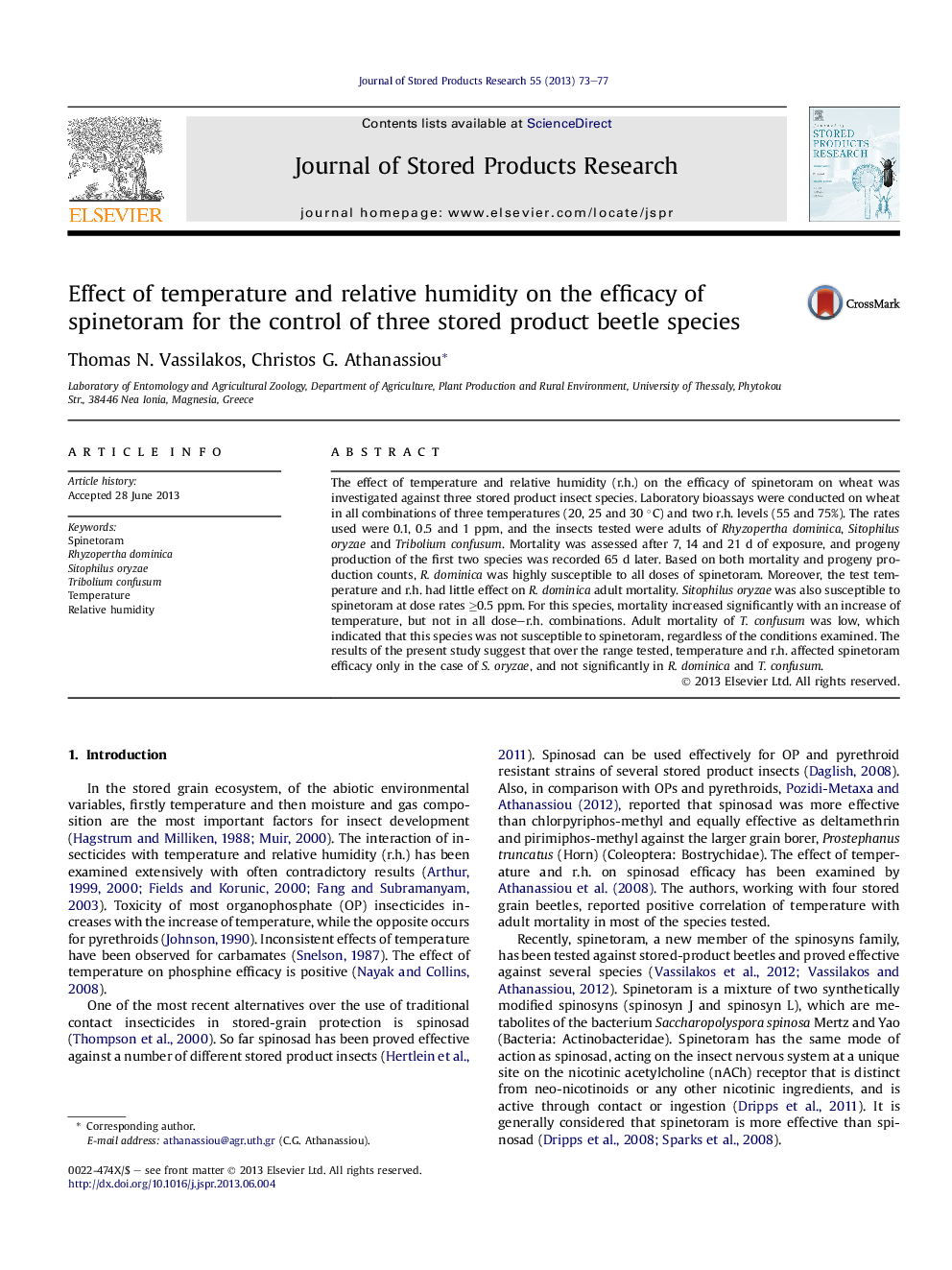| Article ID | Journal | Published Year | Pages | File Type |
|---|---|---|---|---|
| 4517143 | Journal of Stored Products Research | 2013 | 5 Pages |
•Spinetoram was effective against R. dominica and S. oryzae at 0.5 ppm or higher.•Spinetoram was not effective against Tribolium confusum.•Spinetoram efficacy was increased with temperature for S. oryzae.•Temperature had no effect in spinetoram efficacy for the other two species.
The effect of temperature and relative humidity (r.h.) on the efficacy of spinetoram on wheat was investigated against three stored product insect species. Laboratory bioassays were conducted on wheat in all combinations of three temperatures (20, 25 and 30 °C) and two r.h. levels (55 and 75%). The rates used were 0.1, 0.5 and 1 ppm, and the insects tested were adults of Rhyzopertha dominica, Sitophilus oryzae and Tribolium confusum. Mortality was assessed after 7, 14 and 21 d of exposure, and progeny production of the first two species was recorded 65 d later. Based on both mortality and progeny production counts, R. dominica was highly susceptible to all doses of spinetoram. Moreover, the test temperature and r.h. had little effect on R. dominica adult mortality. Sitophilus oryzae was also susceptible to spinetoram at dose rates ≥0.5 ppm. For this species, mortality increased significantly with an increase of temperature, but not in all dose–r.h. combinations. Adult mortality of T. confusum was low, which indicated that this species was not susceptible to spinetoram, regardless of the conditions examined. The results of the present study suggest that over the range tested, temperature and r.h. affected spinetoram efficacy only in the case of S. oryzae, and not significantly in R. dominica and T. confusum.
